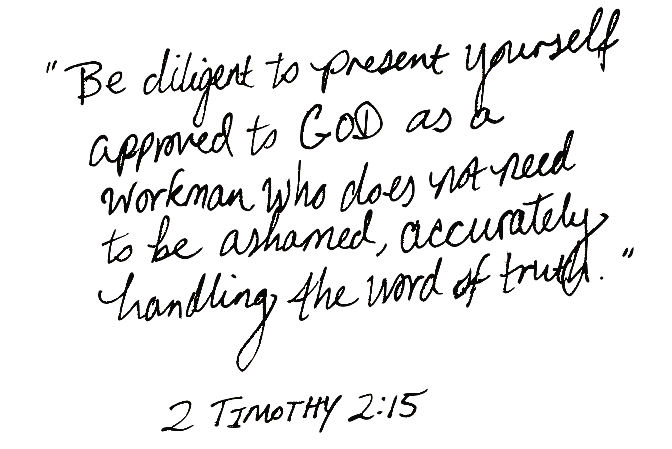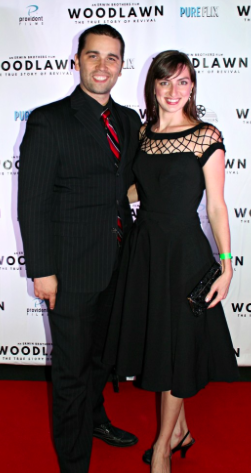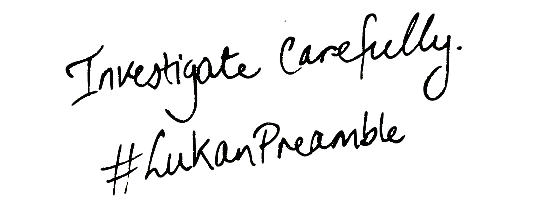Finally, I shall explain what all this research and writing and registering is really all about after all. What exactly is The Crusading Chemist about anyway? First of all, it is a biopic about a historical character already vague and yet increasingly curious to the modern audience: Harvey W. Wiley, Chief Chemist of the Department of Agriculture (specifically, of the Bureau of Chemistry – precursor to the FDA) from 1883-1912. As for the title, I didn’t just make that up either. This man was referred to as “The Crusading Chemist” during his popular career.{You’re probably still wondering – “who?”, but you’ll figure that out later…}
A STORY OF A FORGOTTEN HERO
I learned about this fascinating forgotten hero of American history when Mom was researching nutrition four years ago. As many of you probably well know, much of the food that is manufactured, sold and consumed in our country is adulterated and leeched of the essential nutrients that our ancestors used to have access to. That is why there is such a strong emphasis on taking vitamins and finding organic whole foods in our modern day and age. But where did that ridiculous controversy start in the first place? Why isn’t everything at the store natural and wholesome like it should be? Why should we even have to worry about it?
Just a little over one hundred years ago, American citizens were outraged over such products. Back then additives, preservatives, bleached flour, etc. were freak practices of careless businessmen that were fast becoming vogue. Harvey Wiley, once just a farmer boy from Indiana (the 6th of 7 children as a matter of fact!) and eventually early 20th century America’s most famous chemist, decided that something must be done about it. {Allow me to lapse into present tense here, as drama goes} His crusade for a law banning such practices (known as the Pure Food and Drug Law) is opposed only by two main forces that are deeply personified in two actual historical characters: Walter Williams, a fiercely antagonistic businessmen that is ambitious to have a profitable industry no matter what practice – and is later sorely penitent – and Solicitor McCabe, a suave young lawyer ambitious to become the most powerful legal official in the USDA that has grudgingly observed Harvey’s success. McCabe influences the well-meaning but wavering Secretary of Agriculture (the Scottish-born James Wilson) to appoint opposing scientists to counteract the enforcement of the Pure Food and Drug Law in one of the most misunderstood and ignored crimes in American government.
A STORY OF SCIENCE AND POLITICS
As I began doing research on the historical setting, I realized that this story (though perhaps boring at first glance) is a goldmine of poignant themes. One of my favorite elements that I chose to elaborate on is that of science. The protagonist (Harvey Wiley) lives through the most shocking era of change in scientific history: the publicizing of ideas about the origin of life that were contrary to the widely accepted Biblical account of Creation. One thing that struck me most about the era of the late 19th century and early 20th century is that it became somewhat of a “second Renaissance” – a time of “enlightenment” amongst scientists, businessmen and politicians that steered the modern world towards humanism.
The script illustrates the faulty thinking that comes as a result of holding such views – and what happens when our leaders allow elitism to have its way.
A STORY OF AN UNUSUAL ROMANCE
Well, romance is almost stereotypical in every genre of film, but this history happened to have a very unusual sort of spin on that theme. Harvey Wiley composed a humorous chemistry poem about his “Ideal Woman” while in a laboratory at Harvard University when he was around 30 years old. However, he soon became so absorbed in his work and research that for many years he didn’t even consider marriage an option in his busy life. In fact, he didn’t even meet his “Ideal Woman” until he was 54 years old – and she was 33 years younger! Miss Anna Kelton briefly did secretarial work in the Bureau of Chemistry and then took a position at the Library of Congress. Harvey and Anna barely saw each other during the tumultuous decade of the Pure Food and Drug Law’s passage, but they had impacted each other’s lives greatly and both had passion for the cause. When Harvey was 66 years old he proposed to her and she accepted. They married a year later and eventually had two sons.
Harvey Wiley didn’t describe much of his communication with Anna Kelton, and I was unable to access their letters which are now at the Library of Congress. Thus, I had to imagine a good deal of it. I orchestrated cordial dialogue and originally had a plan to cut directly to the end of a wedding scene in order to wrap up that plot at the end of the movie. That was fine in my mind until Mom and Rachel suggested that I write a proposal scene instead. I am hopelessly unromantic and was therefore determined to avoid such a thing. After a few hours of thinking it over I finally brought myself to write it. Rachel still insists that I made it too short…but there is a time constraint for movies, so I have a good excuse. The director and actors/actresses can improve where I falter.
PULLING IT ALL TOGETHER
The bulk of the literary work in a screenplay is dialogue. For this script, I was blessed to be provided with loads of transcripts, Congressional records and writings by direct witnesses as to what these people actually said and did. Some of my favorite scenes took place straight out of Harvey Wiley’s autobiography and New York Times archives! Of course, there are many scenes that I had to edit or invent dialogue for and quite a few scenes that I had to completely fabricate. It will be fun to ask some of you that are used to my writing and speaking style to guess which parts of the dialogue I created and which lines were actually spoken!
As for the characters, all of them are either actual historical characters or they are semi-fictional. What is semi-fictional? For instance: There were numerous young men that joined “The Poison Squad” (Harvey Wiley’s experimental team that consumed preservative-laden foods to see the effects it had on health), but many news sources never released their names. I invented a minor character that joins The Poison Squad and happens to have an older sister that is a good friend of Anna Kelton. Technically you could consider his sister a fictional character, but as it turns out, she too becomes a semi-fictional character as the story progresses, because I use her to to fulfill the role of yet another otherwise anonymous historical character.
~ CAST OF MAJOR CHARACTERS ~
HARVEY WILEY – {protagonist} The Chief Chemist that fights for the Pure Food and Drug Law
W.D. BIGELOW – his First Assistant Chemist
SOLICITOR McCABE – {antagonist} The high ranking lawyer in the Department of Agriculture that leads the undermining of the Pure Food and Drug Law
WALTER WILLIAMS – The businessman that further influences Solicitor McCabe in defeating Harvey Wiley…and later regrets it
SECRETARY WILSON – The well-meaning Secretary of Agriculture that unwittingly defeats Harvey Wiley by listening to Solicitor McCabe
THEODORE ROOSEVELT – President of the United States during the fight for the Law
ANNA KELTON {love interest} The lovely young secretary to Harvey Wiley that later becomes his wife
VIVIAN MALLORY – her fashionable friend
EDWARD MALLORY – Vivian’s brother who joins Harvey Wiley’s “Poison Squad”
FREDERICK DUNLAP – The somewhat clueless young chemist appointed due to Solicitor McCabe’s designs for thwarting Harvey Wiley
ALICE LAKEY – A strong supporter of Harvey Wiley’s movement, she endorses the Act publicly in the women’s clubs
|
{Harvey Wiley} |
{The only picture I could find of W.D. Bigelow – he is actually much younger in the story} |
|
{Solicitor McCabe – picture from an article in The Hampton Magazine} |
{Secretary Wilson – just imagine, he had a Scottish accent, you know…} |
|
{President Theodore Roosevelt, of course} |
{Frederick Dunlap – picture in The Hampton Magazine} |
|
{I scanned in this photo of Anna Kelton from Harvey Wiley’s autobiography} |
{There’s a better picture of Alice Lakey somewhere…I just need to find it} |
THE TREATMENT
The Treatment is supposed to capture the best aspects of the screenplay and convince a producer or director that it deserves to be made into a film. It is written in present tense just like the script itself. Does it tell you what you want to know about the screenplay? Does it make you want to read the screenplay or watch the movie? Or is it too long, too dull, too much or not enough? Please offer as many suggestions as you would like! Remember that the eloquence of the Treatment may be the only chance of ever getting the screenplay even close to being produced.
~ ~ ~
The story opens in 1926 at the 20th Anniversary dinner of the passage of the Pure Food and Drug Law. The storyline is woven from the accounts of Harvey Wiley, our hero, as he gives his speech and Walter Williams, the contrite businessman that originally collaborated with the scheming young lawyer, Solicitor McCabe, to oust Harvey and his Act. But where did Harvey gain such passion for this cause, and where did the businessman and lawyer get their antagonism for it? A historical character already vague and increasingly curious to the modern audience, Harvey Wiley’s story encompasses the remarkable complexities of his lifetime involving science, politics, nutrition and cultural change in the United States of America – as well as shed light on the story behind our current FDA’s major downfall in protecting the people.
ood and drug regulation in the United States is an issue that the lives of its citizens depend upon, but an entire century after its enactment, The Crusading Chemist is the first dramatized retelling of the forgotten history of the man behind it: The true story of Harvey Wiley {1844-1930}, an ambitious farmer boy from Indiana who becomes Chief Chemist in Washington, D.C. and oversees the political battle for and enforcement of the famous Pure Food and Drug Law.
“That man was ahead of his time,” the old businessman Walter Williams quips to the naive young Reporter at the back of the room. “But the more obvious it becomes that he was right, the less people listen to him.”
The chatter in the classy, sparkling dining room of the Waldorf-Astoria dies down as the audience turns its attention to a distinguished gentleman at the head table.
“It’s only been twenty years, Harvey. That’s young for a law, don’t you think?” mentions the lovely Mrs. Anna Kelton Wiley, at least thirty years younger than her husband.
Still stately at the advanced age of 82, Harvey Wiley, our hero, graciously tells his story once more…the story behind one of modern America’s most complacent tragedies.
“The events that led to that complex yet ignored history humbly came about in the beginning by simple observation,” says Harvey, his style of speaking as enrapturing as ever. “When there is so much progress, people tend to forget.”
Flash back to Kent, Indiana in year 1863. An 18-year-old Harvey Wiley sets out from his family farm to go to college. He witnesses the cultural and industrial changes of the day experiencing everything from lectures at Hanover College and Harvard University, serving in the War Between The States, apprenticing with a country doctor and finally studying over seas at the Imperial Health Laboratory with Dr. Eugene Sell.
There something dawns on him: increased industry results in a demand for a nearly mechanical production of food. The manufacturers are beginning to resort to the use of toxic preservatives (i.e., formaldehyde in milk, sodium benzoate and copper sulfate in canned goods, sulfur dioxide in dried fruits…), adulteration and misbranding. It will become slowly but surely more difficult for people to provide safely for their families as this unnatural revolution takes place. It is now that Harvey feels a calling to seize upon this pressing issue that is invading his own country. He returns to the States to resume a teaching position at Purdue University and begins informing the public of such hazards by writing for science magazines.
His experience gains him the position State Chemist at the State Board of Health. At a convention in Missouri he meets Commissioner of Agriculture Dr. Loring, who is so impressed by Harvey’s work that he secures an offer for him to become Chief Chemist of the United States Department of Agriculture.
He arrives at the archaic Washington, D.C. of the late 19th century, bearing the responsibility of being a high ranking agricultural scientist challenged with maintaining diplomacy and resolve despite changing Presidential administrations. His days get busier, but he refuses to let go of his desire to reform the nation’s chaotic food and drug industries.
As the late 1890’s roll to and end, he is in his 50’s and far from family and close friends – apparently a confirmed bachelor. Surprisingly, at this wearying time in his life he meets a beautiful young woman named Anna Kelton. He is immediately smitten with her poise and dignity, which fully embody all the charms he scientifically described in a humorous poem he wrote in a Harvard Laboratory that portrayed his “Ideal Woman” – which, as a man of high standards, he previously presumed he would never find. The seeds of their romance are sown. After Anna (who happens to be 33 years younger than Harvey) leaves her secretarial post at the Bureau of Chemistry, they only occasionally see each other throughout the next decade. The script follows Anna Kelton’s life to add another dimension to the story: American society’s view of the crucial issue, including the involvement that women had in it.
Becoming restless and determined, Harvey Wiley finally decides there is ample evidence for presenting the case of the nation’s health to its leaders. “So far there has been too much argument about the effect of chemical preservatives on health,” he says, addressing a conference of delegates debating about food regulation. “I propose to find out by scientific experimentation what is the truth about a question of such vital concern to the consumers of the nation. Someday we will have a law,”
His confidence mysteriously infuriates an unimpressed audience member at the back of the room – George McCabe, a suave young lawyer ambitious to become the most powerful legal official in the USDA. How dare Dr. Wiley propose a significant law without consulting him first?
The Scottish-born Secretary of Agriculture James Wilson holds McCabe in high esteem, repeatedly following his advice in dealings with Chief Chemist Harvey Wiley, not realizing the increasing grudge he has against him.
Being the honest scientist that he is, Harvey, along with his capable and discerning assistant W.D. Bigelow, conducts experiments to further validate his convictions. A group of young men volunteer to test the consequences of consuming tainted foods. The studies of “The Poison Squad” draw much attention from the press. Harvey Wiley’s excellent analytical presentation convinces a congressional committee to approve his plan and allow him to help draft the bill – much to Solicitor McCabe’s loathing.
The politics of the scenario draw in another catalytical persona of interest: President Theodore Roosevelt. Roosevelt has conflicted with the perfectionist Chief Chemist occasionally, but he is impressed by Harvey’s common sense and integrity. Roosevelt signs the Act into Law on June 30, 1906, drawing cheers from all the citizens except some unreasonable businessmen – one of whom is Walter Williams. Williams, ambitious and impatient to have a profitable industry no matter what practice, consults with Solicitor McCabe along with others in his clique to weaken the law.
Solicitor McCabe influences the well-meaning but wavering Secretary Wilson to appoint a board of elite conflicting scientists – “The Remsen Board” – to counteract the enforcement of the Pure Food and Drug Law in one of the most misunderstood and ignored crimes in American government. McCabe ultimately constructs a nemesis of convoluted bureaucracy that drives a schism between Harvey, the President and Secretary Wilson, ultimately making himself the superior authority over the law. Once McCabe gains this power, he discards and manipulates prosecutions in order to allow the illegal practices that the careless food and drug industries prefer. Thus begins the complex friction that will haunt Harvey Wiley and the nation forever.
When a court in Harvey’s home State of Indiana begins hearings on a case regarding their manufacturers and the State Board of Health, Harvey and Bigelow are among the government chemists summoned to clarify the dangers of preservatives. Solicitor McCabe issues an order preventing them to testify, which results in the case being brought to the Supreme Court. When Bigelow and one of the manufacturers that abolished sodium benzoate in his products testify the truth, Walter Williams suddenly realizes that he has been on the wrong side. When he withdraws his prosecution and admits that Harvey is right, Solicitor McCabe is furious. Though he could retreat from his lost and sickening cause, McCabe has for so long fought against Harvey Wiley that his most ambitious desire now is to defeat him.
The climax is reached when the Association of Food and Drug Officials convention takes place in Denver, Colorado. Elections are held to determine leaders that will be influential in upholding the Pure Food and Drugs Law. When the wrong candidates are elected due to Solicitor McCabe’s campaigning, the Remsen Board’s faulty science is upheld and support for the Law is undermined.
The worst has arrived for the Pure Food and Drug Law and its staunch founder, Harvey Wiley. The leaders that have gained the most power over the issue have practically silenced the debate in front of the outraged public without a hint of remorse. Perhaps the only vindication left is the Moss Committee Investigation during which Solicitor McCabe is forced to admit that his decisions have been deliberately antagonistic towards the Chief Chemist.
The honest investigation clearly favors Harvey, but to no avail at the time. It will all be a preserved but untouched record of history as time goes on. Just as Harvey has decided that his service in Washington is dwindling, he happens to run into Anna on a streetcar. He asks to call and proposes that very afternoon.
In 1912, Harvey Wiley resigns from the Bureau of Chemistry. With his new bride, Anna, at his side he moves to the countryside of Virginia where they will raise two sons in the years to come.
Return to the Waldorf-Astoria Dining Room in 1926. Harvey Wiley’s speech is ending.
“If the Bureau of Chemistry had been permitted to enforce the law as it was written and as it tried to do, what would have been the condition now?”
At the back of the room, Walter Williams, remorseful, turns away from the Reporter and leaves.
“The health of our people would be vastly improved and their life greatly extended…” Harvey continues. The indomitable Harvey’s battle has not ended, but the battleground has changed. He bears his frustration with the understanding and warning that neither industry nor government nor science can save a nation. It is the family that must preserve health, strength and values for the future generations.
Now his conviction is understood. Foreseeing the demise of the nation’s health, he continues to write voraciously. Among his many writings is his story of the Pure Food Law in which he portrays one of the elements in history that contributes to the mystery of how the most blessed nation in the world has unnecessarily suffered under its own indulged weakness. Harvey Wiley closes his book with the compassionate hope that one day its audience will remember its responsibility and be moved to action.
~ ~ ~
Well, I hope you’ve enjoyed a brief history lesson, if nothing else. There are lots of exciting things that I’ve been busy with that I hope to write about soon.
Take care and May the LORD Bless!
~Amanda~
Comments
Tuesday, April 15, 2008 – Untitled Comment
Posted by BlogBoy
Drat! I want to see the movie! Lol. Well I guess I’ll have to wait for a while on that one 🙁 For real though, looks like you’ve done a great job on this.
RYC: Yes, I totally agree with you. Chaos is the worst problem. If you watch a disaster happen you will note that the disaster does a lot of damage, but the looting and rioting do more.
Eric
• Permanent Link • Edit • Delete
Tuesday, April 15, 2008 – Untitled Comment
Posted by GraceElizabeth
That is very interesting! I’m quite fascinated; it sounds like you had a great plot to develop as a screen-writer! I hope someone does produce your movie, a successful film about truly relevant issues is something we could use in our culture, to show that it’s not only the cheap, thrown-together soap operas that make money!
Thank you for letting us in on the story!
I awarded you if you wish to accept; come over to my blog and see!
Have a great evening!
~Grace
• Permanent Link • Edit • Delete
Wednesday, April 16, 2008 – Untitled Comment
Posted by BlogBoy
RYC: Oh, tell your mom happy birthday for us. 😉
I saw the screenplay in my inbox, I haven’t had a chance to read it yet. I really want to though 😛
I’m ready on the website when you are. Just say when.
Yes! I did get the package. I totally forgot to email you about that. I’ll do that soon also. Ah, life is busy. Lol.
Eric
• Permanent Link • Edit • Delete
Sunday, April 20, 2008 – Untitled Comment
Posted by BlogBoy
Can you pray?
Eric
• Permanent Link • Edit • Delete
Sunday, April 20, 2008 – Untitled Comment
Posted by BlogBoy
It starts at 7PM CST tonight.
Eric
• Permanent Link • Edit • Delete
Sunday, April 20, 2008 – Untitled Comment
Posted by BlogBoy
Ok, I added you to the 7:30 slot.
Those are all the prayer requests that we have right now, but if anymore come in I will post them. T
he Rebelution forum is really hard to get into. You have to fill out a ton of stuff to get on there. Then they have to process it. It would probably take a few weeks to get on there.
Thanks for praying!
Eric























